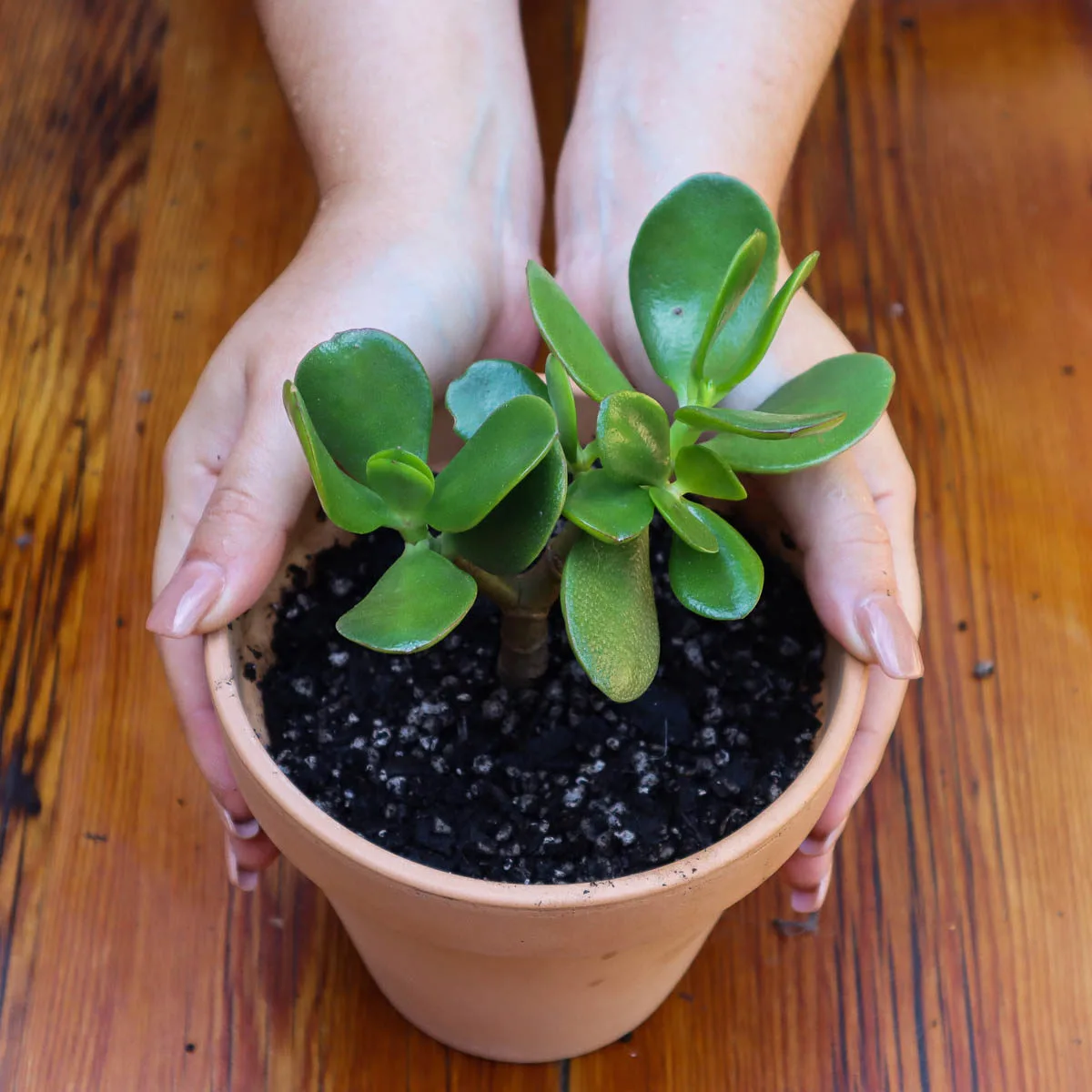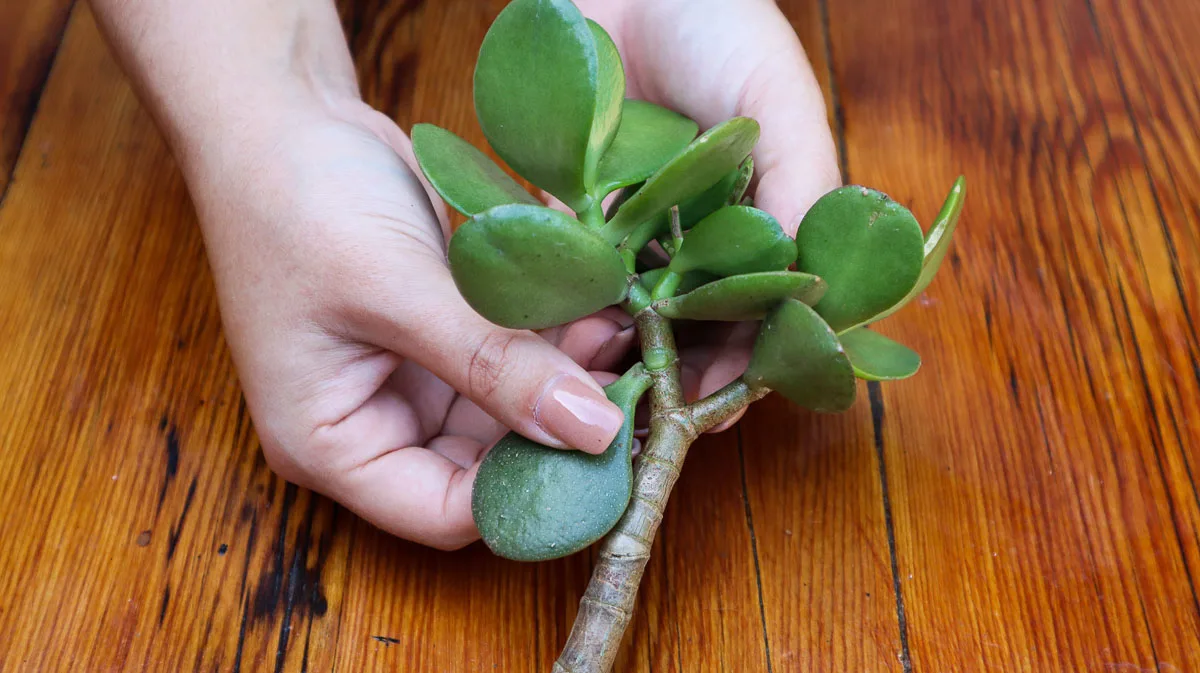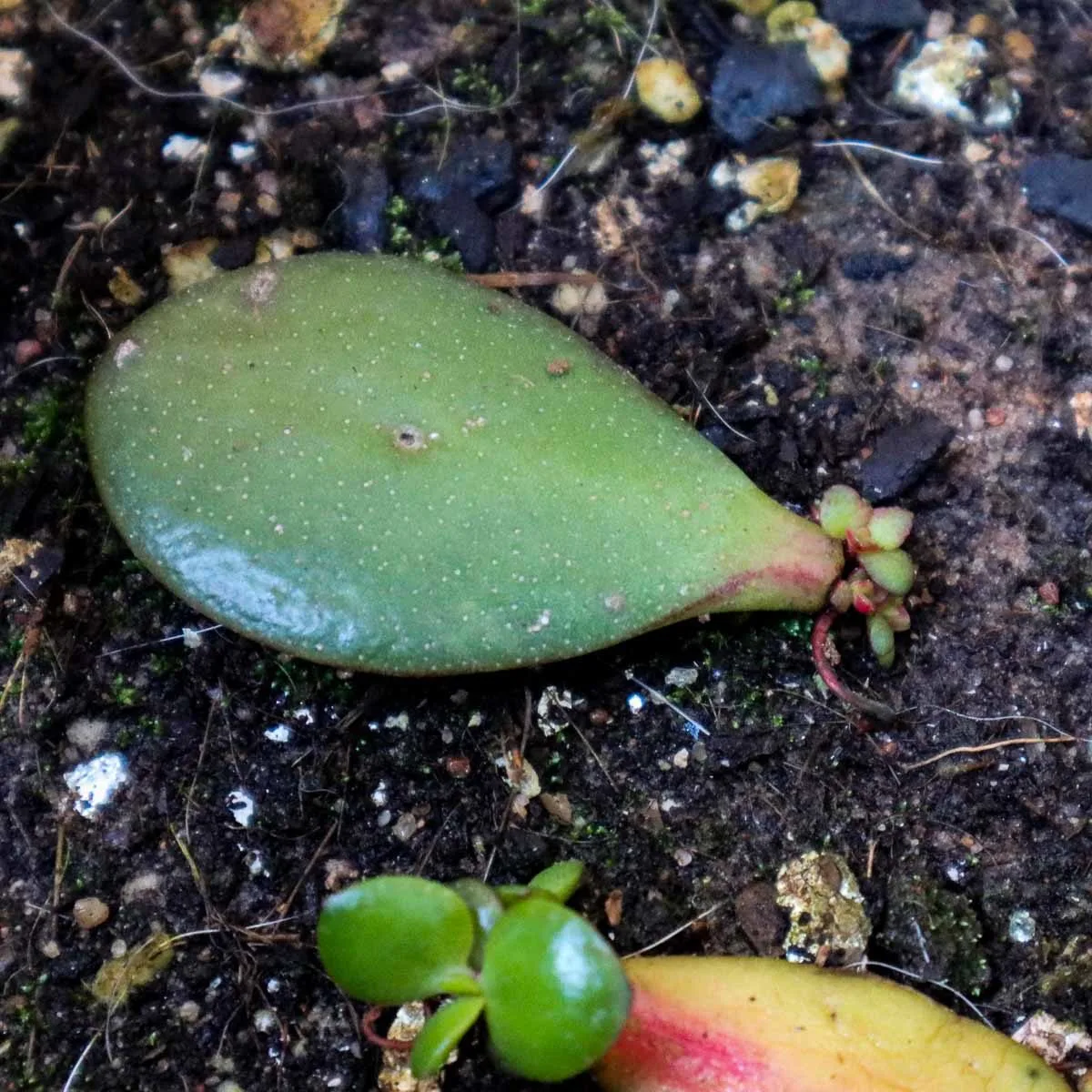
Scientifically known as Crassula ovata, Jade plants are fast becoming one of the most beloved garden and houseplants around.
Native to South Africa, these succulents are incredibly resilient and almost impossible to kill (provided you don’t overwater them). With so many great qualities, it’s easy to understand why so many gardeners love propagating these beauties.
The propagation process for these plants is incredibly simple. Beginning in spring, you can either propagate from stem cuttings or from leaf cuttings.

Stem cuttings may root and grow into full plants quicker, but leaf cuttings are a great option for those with smaller plants that don’t have large branches suitable for rooting.
No matter which route you take, you’ll find these few steps simple and easy to do both indoors and out. And, with a bit of patience, you’ll have a brand new Jade plant (for free too) in no time.
Propagating Jade From Stem Cuttings
Choose The Right Stem

To increase your chances of rooting, you’ll need to start with a healthy plant free of any disease or damage. It’s also best to identify the perfect place on the plant to make a cut, not only to ensure the cutting roots quickly, but also to keep the parent plant looking tidy.
Look around for the areas where the leaves join the main stem. You’ll need a piece of stem that’s around 4 inches long from one of these points to the tip of the stem. For younger Jade plants where cuttings may not be as long, you can try taking smaller ones or propagating from leaves instead.
Make A Cut

Next, grab your pruning shears or a knife. They should be completely free of dirt and disease to avoid transferring harmful bacteria to your cuttings and the parent plant. They should also be sharp enough to cut through the thick stems without causing too much damage. The cleaner the cut, the quicker it will heal.
Cut the stem 4 inches down in one smooth motion, avoiding any chopping or hacking that will take longer to heal. You can either cut right below a node if you’re removing an entire branch or above a node if you want to promote regrowth on the plant. If you’ve chosen the latter, simply trim off the excess stem at the base so the remaining node is at the bottom of the cutting.

Remove any leaves from the bottom half of the cutting, leaving only a few at the top. This exposes more nodes and helps anchor the plant better in soil when rooting. It also directs the energy that would be spent on keeping the leaves alive to producing new roots instead.
Leave To Callous

The next step is one that may not be familiar to those used to propagating tropical houseplants. Unfortunately for impatient gardeners, you cannot root your cutting straight away. Well, you can, but it is far more likely to succumb to rot and disease than it is to produce roots.
Like other succulent plants, Jade needs time to callous over at the site of the cut before planting. They are incredibly sensitive to overwatering and will rot quickly without this extra protective barrier.
Luckily, the process is simple. Rest the cutting on a piece of newspaper and leave it out for a few days at least, but preferably closer to a week. Once the cuts have started to seal, you can get ready to root.
Root In Soil

When rooting, you have a couple of options for soil. If you already have some on hand, you can use a well-draining potting mix designed for succulent plants. Alternatively, you can make your own succulent propagating mix by combining equal parts coconut coir and perlite or river sand.

Fill a pot with your chosen mixture and water thoroughly until water runs through the drainage hole at the bottom. This prevents waterlogging and stiffens the soil mixture to make planting easier.
Grab the cutting and poke a hole in the center of the pot with your finger. Plant the cutting until the bottom half is buried and press around the soil to anchor it in place.
After Care

Move the pot to a warm area to promote new root growth. Keep the soil evenly moist but never waterlogged until roots start to develop. Once the roots are a few inches long, you can slow down on the watering to prevent rot, treating the cutting as you would your other Jade plants.
Propagating Jade From Leaf Cuttings
Choose The Right Leaf

Again, as with stems, a good cutting starts with a good leaf. Look for leaves that are plump, bright green, and don’t display any signs of pest or disease damage. Choosing one from a healthy stem will also give you the best chances of rooting.
Remove The Leaf

The next step may sound the simplest, but there is some finesse to it. For your leaf cutting to actually grow roots and plantlets, it needs to have part of the node of the stem with it. Just trimming a leaf off at any point won’t guarantee your cutting is actually able to produce roots.
When removing a leaf, make sure you take it from the lowest part of the base, removing some of the node as you go. You can either twist the leaf off with your fingers or trim it off at the stem. Don’t damage the structure of the leaf in the process as this may hinder your chances of rooting.
Leave To Callous

Just like stems, the leaves also need a few days for their wounds to seal before they can be planted. This stops the base of the leaf from rotting, ruining all chances of rooting. Simply leave them to dry off on a piece of newspaper for a day or two before planting.
Root In Soil

Leaf cuttings can be planted in the same propagating mix as stem cuttings. You can even plant a few leaf cuttings around your stem cuttings in the same pot to greatly increase your Jade stock. Watch the moisture levels in the soil as the leaves can start to rot quickly if left damp for long periods.
Don’t push the leaf into the soil too deep to prevent rot. Only bury the very base of the cutting where the roots will develop. You can also lay the leaf on top of the soil and cover it with some additional potting mix to promote root growth.
After Care

In a warm spot and with evenly moist soil, the leaf will start to develop new growth at the base within one to two months. You can leave this plantlet to grow in the same pot until it is several inches high before transplanting it into a succulent soil mix.

These plants grow slowly from leaf cuttings (and even from smaller stem cuttings), but they are well worth the wait.

